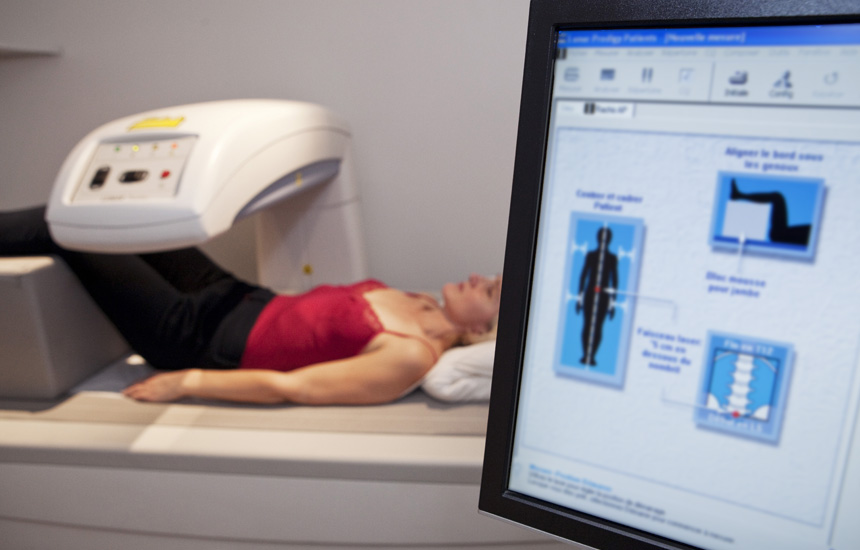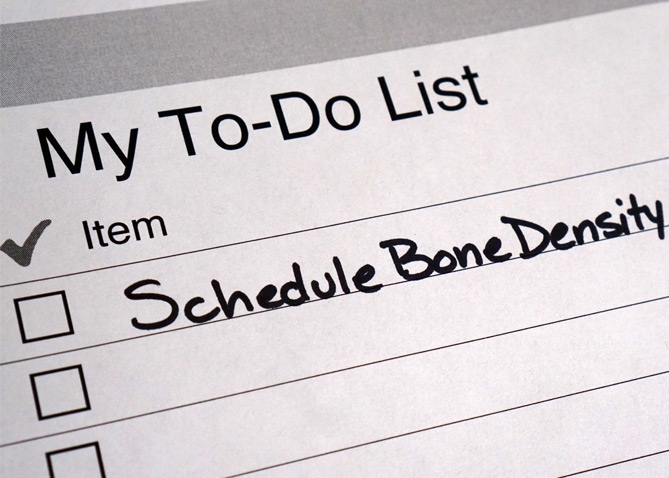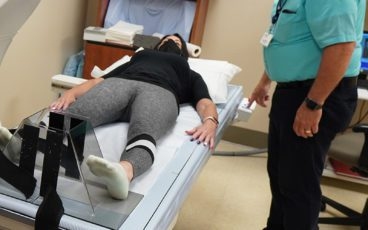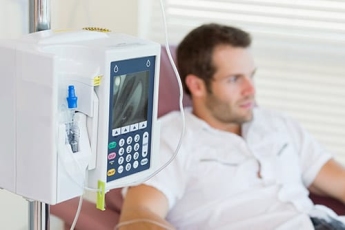Bone density testing is performed with the patient lying on a comfortable, padded table. A low-energy X-ray beam is passed through the bones in the spine, hip, or other skeletal sites, and measures, in a highly precise and reproducible manner, the density of the bone of interest. These bone mineral density (BMD) measurements determine the strength of bone and its risk for fracture, which is characterized as normal, osteopenia, or osteoporosis.
Preparing for the DXA Scan
Preparation for a DXA scan is minimal:
- Wear loose, comfortable clothing, avoiding garments with metal zippers or buttons.
- Inform your doctor if you recently had a barium examination or have been injected with a contrast material for a CT scan or radioisotope scan, as you may need to wait 10 to 14 days before undergoing a DXA scan.
- Women should always inform their physician if there is any possibility they are pregnant.
- Do not take calcium the day of your DXA scan.
Taking the DXA Scan
The DXA scan is a quick, painless procedure, typically completed within 40 minutes. During the scan, patients lie on a padded table while the DXA machine passes over their body. It emits a low-dose X-ray, with one beam at high energy and the other at low energy. The amount of X-rays absorbed by the bones is then measured and used to calculate bone density.
Reviewing the Results of the DXA Scan
The results of a DXA scan are reported in two numbers: T-score and Z-score.
- T-score: Compares your bone density with that of a healthy young adult of the same sex. A T-score of -1.0 or above is considered normal, between -1.0 and -2.5 indicates low bone mass (osteopenia), and -2.5 or lower suggests osteoporosis.
- Z-score: Compares your bone density to what is normally expected in someone of your age, sex, weight, and racial or ethnic origin. A lower Z-score may suggest something other than aging is causing abnormal bone loss.
With a timely and accurate DXA scan at IBJI, your physician will personalize a plan with you to improve the quality of your bones to prevent fractures. IBJI’s rheumatology team is also proud to use a new diagnostic tool called the trabecular bone score (TBS). TBS scores provide supplementary information that aids in the diagnosis of osteoporosis and assessment of fracture risk.
Frequently Asked Questions
How long does a bone density scan take?
Using the DXA instrument, bone density scans take about 40 minutes.
What can be diagnosed with a bone density scan?
Bone density scans allow doctors to check your bone health. It is the only test that can diagnose osteoporosis. The scan will reveal a measurement that will tell you whether your bone density is normal or low (osteopenia or osteoporosis). Please schedule an appointment with one of our board-certified rheumatologists. An IBJI technologist will perform the scan and results will be read by a board- and ISCD-certified rheumatologist.
Why do doctors order bone density scans?
Doctors order bone density scans to determine if your bone density is normal, osteopenic, or osteoporotic. This allows them to make recommendations regarding the appropriate preventive and treatment options to help you avoid further bone loss and prevent fractures.
What are the possible side effects of a bone density scan?
Bone density or DXA scans are quick and painless. They are safe for most people, and you can drive yourself home after the test. However, pregnant women should avoid them, as even low doses of radiation can potentially harm an unborn baby.
Is DXA scan safe?
Yes, DXA scans are safe. They use a very low dose of radiation, significantly less than a standard chest X-ray.
Does insurance cover DXA scans?
Many health insurance plans cover DXA scans, especially for individuals at risk for osteoporosis. However, it's always a good idea to check with your insurance provider. IBJI has dedicated staff who can help you navigate the insurance process to get the maximum coverage possible.
When should I get a bone density scan?
The Bone Health and Osteoporosis Foundation (BHOF) recommends that all women over the age of 65 and men over the age of 70 get a bone density scan to screen for osteoporosis. Patients with other risk factors should get the test sooner. Talk to your doctor if you are a candidate.






